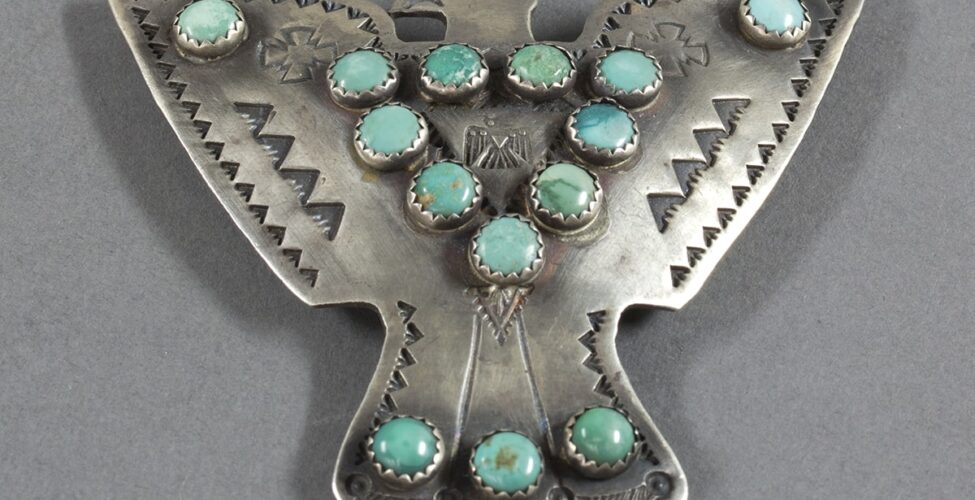“Silver and turquoise jewelry plays a special role in Navajo families. They are passed on from one generation to the next and worn for all types of special occasions. Apart from personal connections to our family members who wore the jewelry before us, they connect us to our heritage as masters of silverwork and are full of cultural symbolism. The date attributed to this pin is circa 1920 and is evidenced by the preponderance of stamped designs and the simple, but charming, head of what appears to be a thunderbird, a species of ferocious monsters mentioned in the Navajo creation story. If you look carefully, you can see a second smaller thunderbird shape was stamped into the middle of the pin. The creation story speaks of a male and a female thunderbird, so it is possible the maker was depicting both in this representation. Inverted triangle stamps appear in two sets of four on each wing which could be another cultural reference to the four sacred mountains. More evidence of the age of this 100-year-old pin includes the non-uniformity in the turquoise insets, exhibiting a wide variety of colors and imperfections. Jewelry can sometimes be dated based on the source of the turquoise indicated by details like these; different mines were active at different times. Regardless of the accuracy of the date, I am sure this pin was cherished for several generations before it was donated to the museum for us to learn from and appreciate.”
—Kathleen Ash-Milby, Curator of Native American Art
Navajo artist, Bird Pin, ca. 1920. Silver and turquoise. The Elizabeth Cole Butler Collection, 2012.92.119



